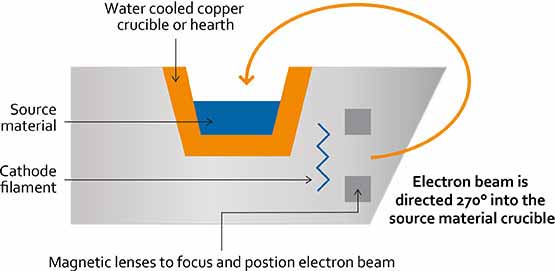Electron beam physical vapor deposition or ebpvd is a form of physical vapor deposition in which a target anode is bombarded with an electron beam given off by a charged tungsten filament under high vacuum.
E beam evaporation substrate temperature.
Electron beam e beam evaporation is a time tested deposition technology for producing dense high purity coatings.
Both the films were deposited for 30 min with deposition rate of 0 11 nm s and 0 27 nm s for e beam evaporated and.
The substrate temperature was varied between 300 and 600 c.
We anticipate a deposition rate of 2 angstroms per second when the evaporation temperature is at 1 200 c.
The electron beam causes atoms from the target to transform into the gaseous phase.
During an e beam evaporation process current is first passed through a tungsten filament which leads to joule heating and electron emission.
They found that films fabricated at substrate temperatures higher than 400 c lose significant amounts of sn by reevaporation.
The elements and binary chalcogenides compounds namely cu zns sns 2 or sn and s served as the sources for czts films.
Evaporation thermal evaporation e beam and ion assistance.
In contrast sputtering is considered a cold technique and substrate heating.
Argon gas flow of 10 sccm was introduced as a sputtering gas.
But for metal oxides which.
These atoms then precipitate into solid form coating everything in the vacuum chamber within line of.
For instance e beam evaporation heats the substrate but the amount of heating depends strongly on the geometry.
Two very common types of processes used are sputtering and electron beam evaporation.
Before deposi tion the substrate was pre sputtered in argon gas for 5 min.
Evaporation is one of the oldest pvd method ever used in coating technology especially the thermal evaporation that it consists mainly in transferring heat to a material in a vacuum environment 10 6 mbar or lower so that the material get to the vapur phase and spread all over the chamber condensing on the surrounsing surfaces.
Normally low melting point materials such as organic polymers gold 1 064 c and aluminum 660 3 c we need electrical resistance evaporation so called thermal.










